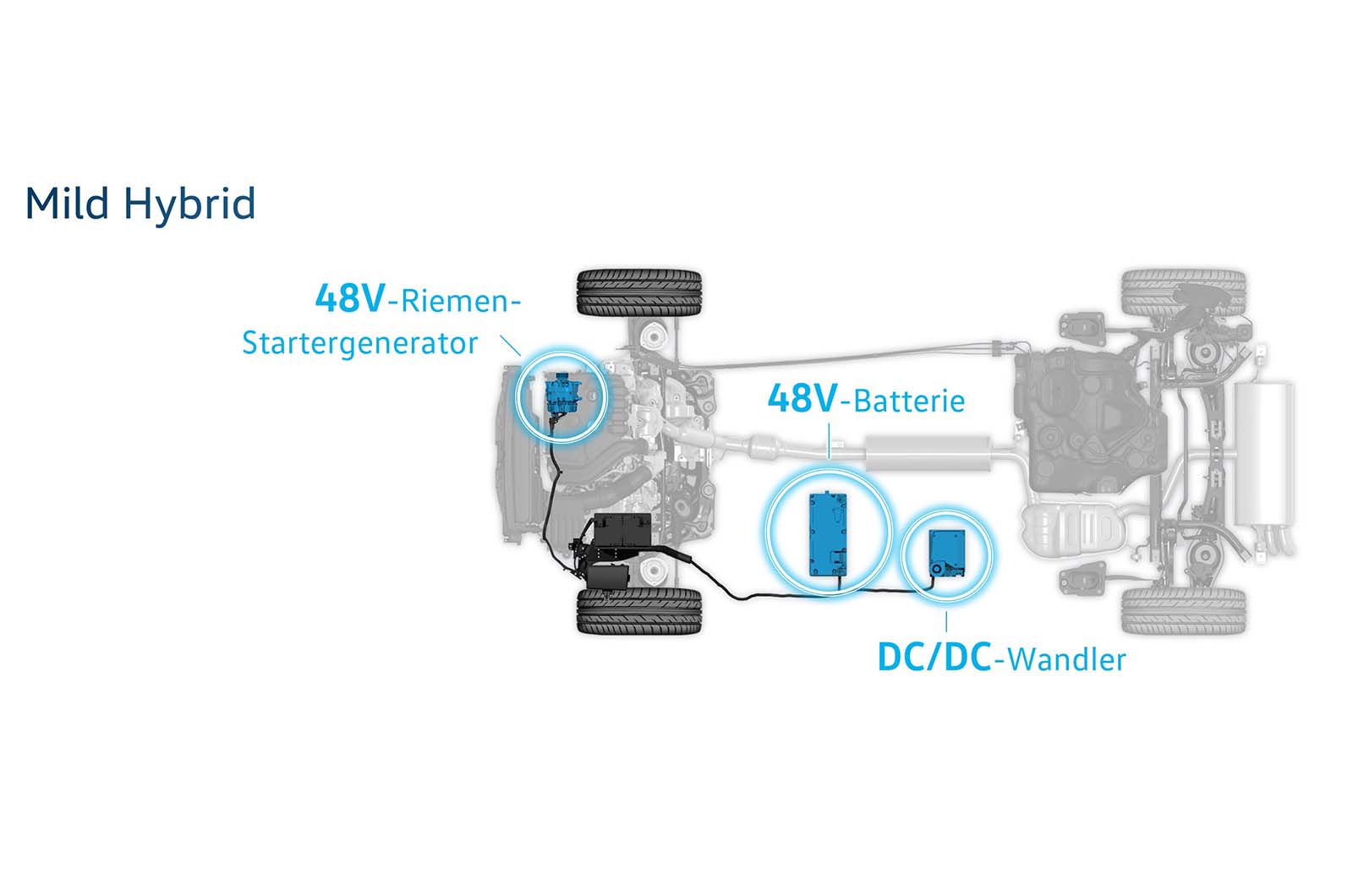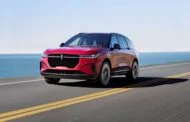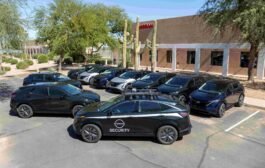Volkswagen has unveiled plans for a new powertrain strategy that would comprise advanced petrol engines and 48V mild hybrids. The company is also expecting to focus more on bio and synthetic fuels in order to offset the damage caused by internal combustion engines. In spite of the diesel emissions scandal, diesel will continue to rank highly in its plans for the future with a company spokesman saying that diesel has a long, clean future ahead of it. Plans for electrification include both front-wheel-drive and four-wheel-drive 48V mild hybrid technology.
The mild hybrid is essentially a 148bhp 1.5 TSI turbocharged petrol engine which will work in tandem with an 8kW belt-integrated starter generator (BISG). The starter generator gives fast stop-start, boosts engine torque and recoups braking energy to store in the car’s 48V lithium ion battery.
A ‘mild hybrid plus’ variant will have an additional 35bhp electric motor which will drive either the front or rear axle. This delivers extra torque to the driveline and recovers energy through regenerative braking, with the engine shut down to save fuel. The powered rear axle drive boosts up traction and makes cornering smoother and easier even in slippery conditions. When compared to the conventional 1.5 TSI engine, the mild hybrid systems are expected to give a fuel consumption benefit of around 7mpg.
There will be a new version of the 128bhp 1.5 TSI engine which will be equipped with a variable geometry turbocharger. Volkswagen claims this turbocharger will deliver the highest compression ratio for a turbocharged engine and best-in-class fuel economy.
The engine will also run on the Miller Cycle, a special high-efficiency operating regime and will be seen in production versions of the Golf 1.5 TSI shortly. Volkswagen is working on a 158 bhp version of the engine and a bi-fuel prototype that can use both compressed natural gas (CNG) and petrol as fuels.
Another new product that is under development is a seven-speed DSG automatic gearbox called the DQ381, that can transmit 310lb ft torque and will deliver a CO2 saving of 10g/km when compared to the original DQ250 unit, which was introduced in 2003.






















